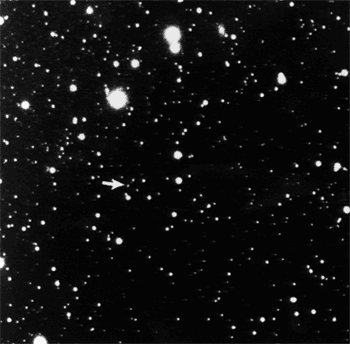Blog
Planet X
10 January 2014
Last year I wrote about how Neptune was discovered by analyzing the motion of Uranus. After Neptune’s discovery, analysis of its orbit showed possible irregularities that some astronomers argued could be evidence of an even more distant planet, which came to be known as Planet X.
 Lowell Observatory
Lowell ObservatoryOne of the strongest proponents of Planet X was Percival Lowell. He was famous (or perhaps infamous) for claiming that canals on Mars were evidence of some kind of Martian intelligence. This led to him being largely ignored by the astronomical community, but he was also wealthy, and funded an observatory in Arizona now known as the Lowell Observatory. In 1906, Lowell began a search for this distant planet. He was never successful, but his observatory did take photographs of an object past Uranus. This new object was discovered by Clyde Tombaugh in 1930 when he analyzed the images below. This new object became the 9th planet, Pluto.
By 1978, Pluto’s mass was determined, and it was found to be remarkably small. It was not nearly massive enough to affect the orbit of Neptune in any measurable way. So further searches for a “Planet X” were undertaken. But over time analysis of Neptune’s orbit found that there wasn’t any evidence of gravitational influence by a more distant planet. So, there is no Planet X. (And no, Nibiru doesn’t exist).
But there are objects beyond Neptune. Lots of them. We now know of at least 1,200 such objects, including four dwarf planets (Pluto, Eris, Haumea and Makemake). None of these is a “planet x” in the way Lowell postulated. There are still searches for a much larger planet out on the edge of our solar system, but so far there is no evidence for such a planet.
So Percival Lowell’s quest for Planet X was a failure. But his search for a planet beyond Neptune marks the beginning of our exploration of the outer regions of our solar system. In that respect, Lowell’s efforts were a great success.